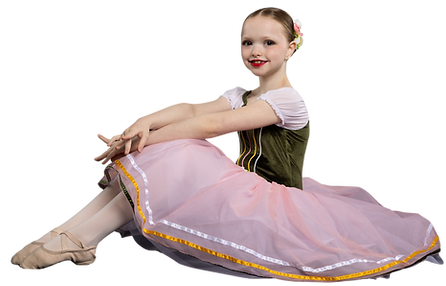Academy Etiquette: Setting Yourself Up for Success
- Principal
- Sep 16, 2025
- 3 min read
Updated: Sep 16, 2025
Ballet class has several traditions built into training that, when observed, prepare the dancer to be ready to learn, work as a group, and show respect to their teacher and environment. Observing these traditions and etiquette not only helps you feel more at home in your class, but also creates an atmosphere that encourages deeper learning. As dancers progress through a leveled system, the expectations naturally become more structured. And while many of these guidelines are rooted in ballet, they truly apply to all styles of dance.

Arrive on time
Please arrive about 10–15 minutes before class. That gives you enough time to settle in without disrupting other classes or waiting too long.
Come prepared
Make sure you’re dressed appropriately for class with the correct shoes, uniform, and grooming. Street clothes or warm-ups should be worn over dancewear when arriving and leaving. Uniforms should be neat, clean, and in good condition. If your dancer has multiple classes per week, we recommend having more than one leotard so everything stays fresh. Please avoid risqué styles—dancewear should look like dancewear, not swimwear.
Take care of your shoes
Dance shoes are for the studio only. Please don’t wear them outside, and likewise, street shoes should never be worn in the studio. Tap dancers should check for loose screws before stepping on the floor.
Practice good hygiene
Shower before class, brush teeth, and use deodorant if needed. It’s helpful to keep deodorant in your dance bag for long days or multiple classes. Tights and leotards should be washed weekly and be free of any stains. Although small holes and runs in the tights do occur, dancers should replace damaged tights as soon as they are spotted.
Secure your hair
Neat hair keeps you looking professional and protects your technique. Ballet requires a proper bun with no flyaways; for other styles, hair should be pulled up and off the face. Loose hair can be distracting, cause collisions, or even lead to unsafe habits.
Be mindful of belongings
Keep your things neat and contained in your bag. Cell phones should be turned off completely (not just on vibrate) and stored away until after class.
Food and drink
Only water in a closed container is allowed in the studio. No food, no gum, and no jewelry—these can be unsafe while dancing.
Respect class time
Be punctual. Late arrivals disrupt class and may not always be admitted. If you’re allowed in late, wait quietly until the teacher invites you to join.
If you must leave early, speak to the teacher beforehand and exit quietly.
Talking during class is discouraged—save conversations for after. Dance class is a time to focus on the teacher and your own movement.
Always wait until the end of an exercise before joining or rejoining the floor.
Mind your body language
Stand tall, stay engaged, and avoid crossing arms or slouching. Teachers are constantly reading your body for feedback, and your posture communicates your focus and attitude.
Take and apply corrections
Corrections are compliments—your teacher sees your potential! Listen carefully, apply what you can, and ask for clarification if you don’t understand. Visible effort goes a long way.
Ask questions respectfully
If you have a question about the combination or something class-related, raise your hand and wait for the teacher. Please don’t interrupt while instructions are being given.
In the studio
Use the restroom before class. Emergencies are, of course, fine.
At the barre, leave space for grand battements and turn toward the barre when switching sides.
In center, give others plenty of room.
Don’t hang on the barre, lean on the walls, or handle equipment without permission.
Be ready when it’s time to start—don’t keep the class waiting.
General respect
Notify the office if you’ll be absent. Keep the studio clean and treat it with care. Be respectful of classmates and staff—follow the Golden Rule. Watch your language and save frustration for after class.







